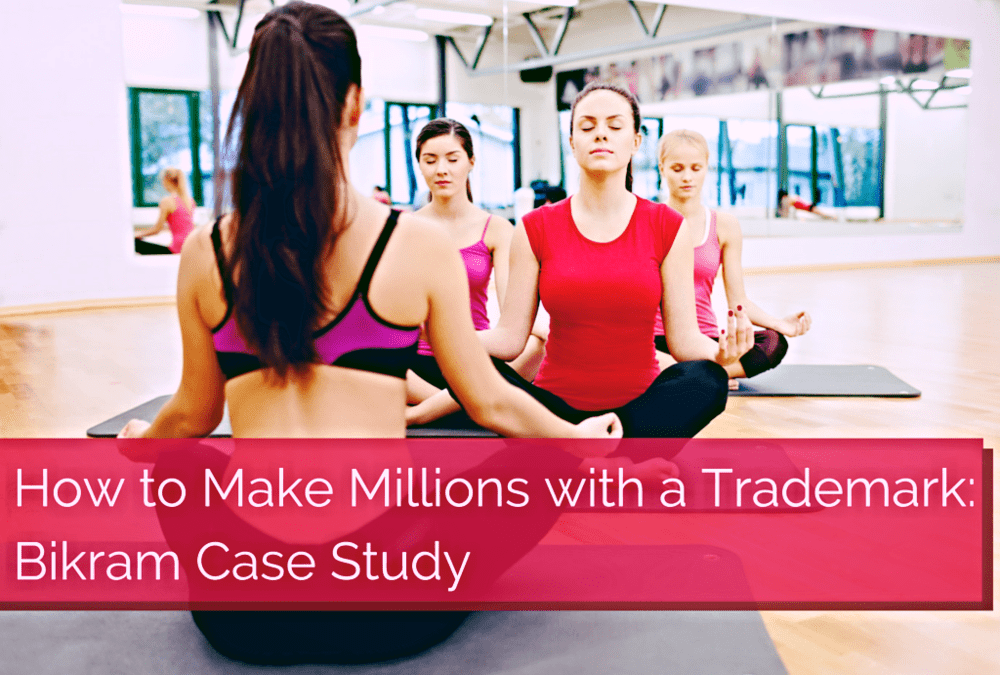How do we create a brand worth millions? Bikram Choudhury did just that with his style of hot yoga called Bikram, which you’re probably familiar with. Bikram consists of a series of 26 posture exercises (asanas) and two breathing exercises performed in a room heated to around 105 degrees Fahrenheit. Some have said Bikram is Starbucks for the yoga world. So how did the founder build the Bikram empire?
Prioritizing Legal Protection
Choudhury was smart from the beginning. He made it a priority to legally protect his intellectual property, and has continued to place huge importance on his intangible assets. He has been extremely diligent about obtaining copyright registrations for his yoga instructional materials, trying even to protect the asanas in the Bikram sequence. And that’s just the beginning.
Setting Up Your Intellectual Property to Profit
The U.S. Patent & Trademark Office (USPTO) granted Choudhury a trademark registration for BIKRAM YOGA covering the following services and goods: “conducting classes, seminars, conferences, and teaching training in the fields of yoga instruction, yoga philosophy, yoga theory and practice, allopathic physical systems, integration of medical and yogic systems, yoga therapy, marketing of yoga instruction, physical fitness, meditation, mental training and discipline, and health, and distributing course materials in connection therewith.”
Choudhury also has rights in the mark BIKRAM (that’s without the “YOGA”) for the above goods and services, AND to cover clothing.
Having the trademark rights for the mark BIKRAM YOGA in connection with educational services gives Choudhury the right to prevent anyone not licensed by Bikram from using the mark.
Making Money Through Licensing
Licensing agreements are your cash cow. In short, a trademark license is an agreement between a trademark owner and a third party in which the licensor allows the licensee to use its trademark in commerce pursuant to specific terms. Anyone who wants to use BIKRAM to describe their yoga offerings has to complete a certification and become authorized under a limited trademark license to teach Bikram’s Basic Yoga System.
Though the process of obtaining a license to use a mark may appear cumbersome and expensive, most smart entrepreneurs know it’s much more cost-effective than defending allegations of trademark infringement.
The outcome for the founder? More than $12 million a month in revenue.
What You Shouldn’t Waste Your Money On
Don’t waste your money trying to trademark a term that is generic. The USPTO automatically denies generic terms. For example, Choudhury attempted to obtain a federal trademark registration for HOT YOGA for conducting yoga instructional classes, seminars, conferences, workshops, and retreats, but the USPTO refused to grant the registration, stating that it’s generic.
Generic terms are terms that are primarily understood as the common name for the goods or services and are by definition unable to signify a source of the goods or services. Granting registration of HOT YOGA to Choudhury would give him a monopoly on the mark and block other yogis from describing their yoga classes as hot!
What Qualifies as a Strong Trademark?
Your desired trademark has to be distinctive. “Bikram Yoga” is distinctive, as there is no tradition of “Bikram” in yoga philosophy. But phrases like “Hatha Yoga” and “Vinyasa Yoga” are terms that have been used to describe philosophies of yoga for hundreds of years so they could not be trademarked.
When considering the strength of your potential mark, ask the question of whether your mark is a source identifier or whether it can generally be viewed as describing your goods or services.
If you want to set up your IP to make money for you, then think about hiring a professional. Working with a good business attorney is probably one of the best decisions you’ll make.
